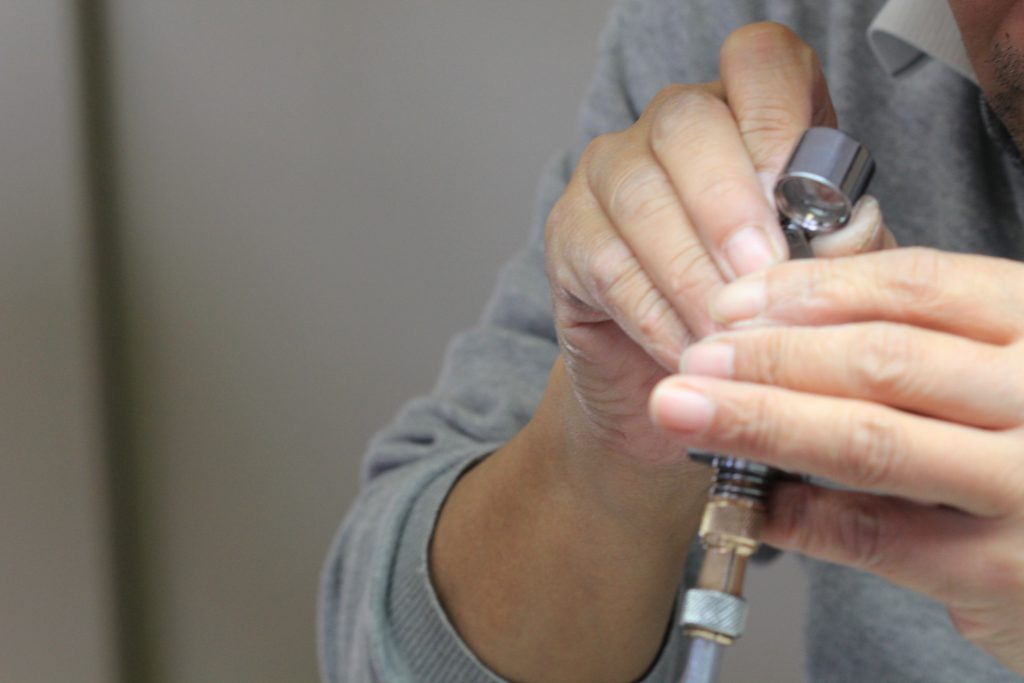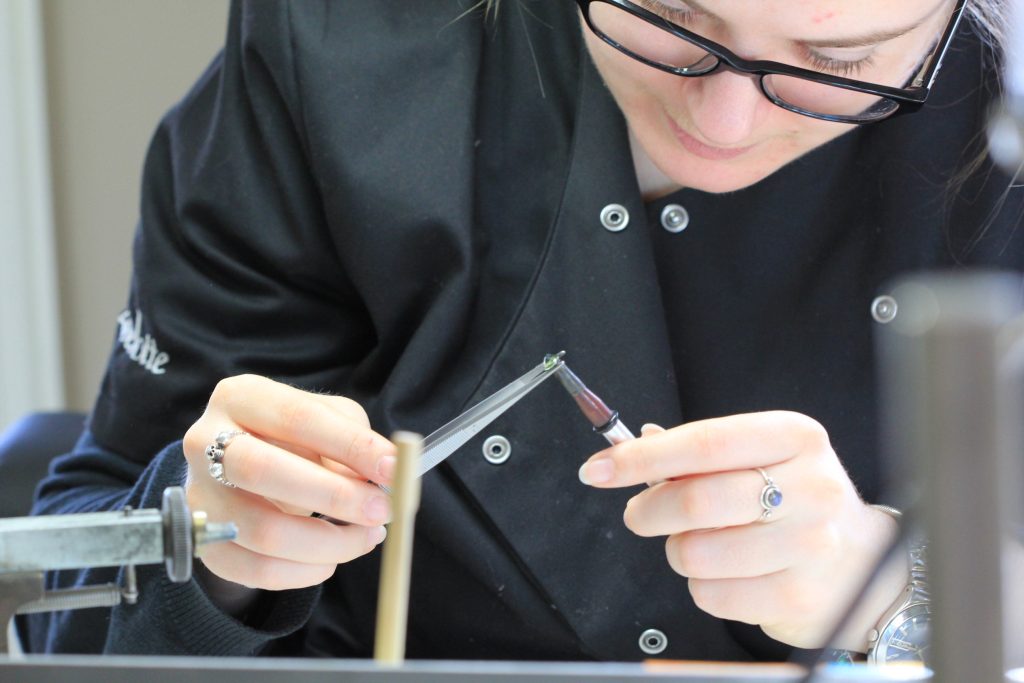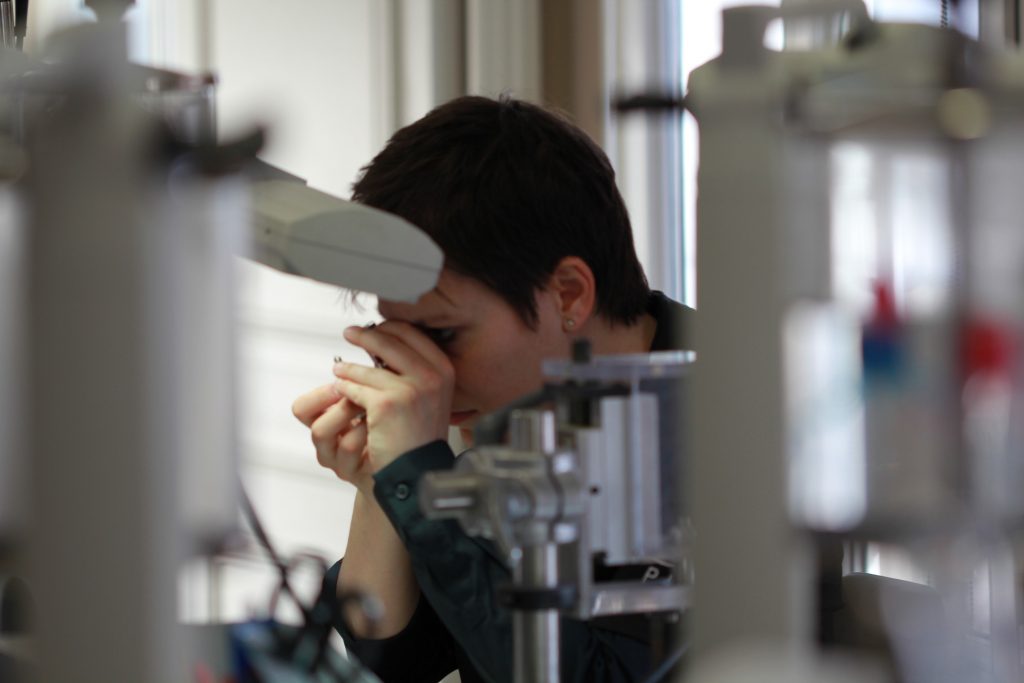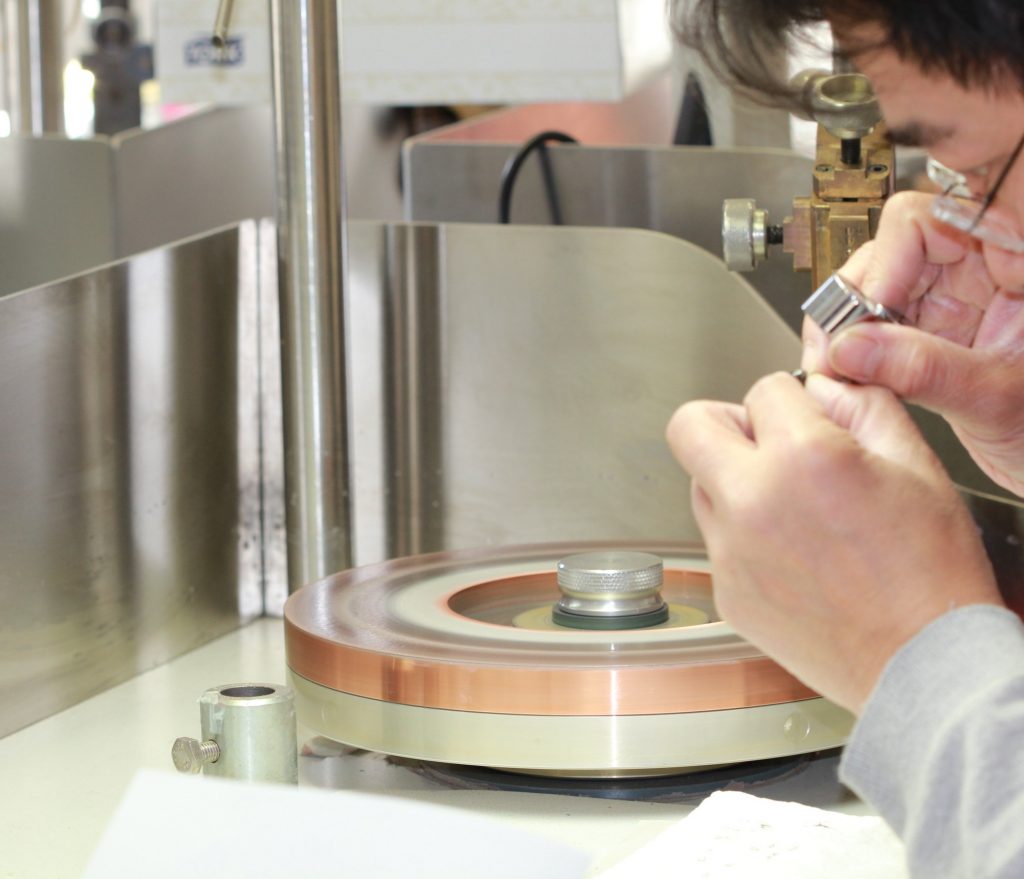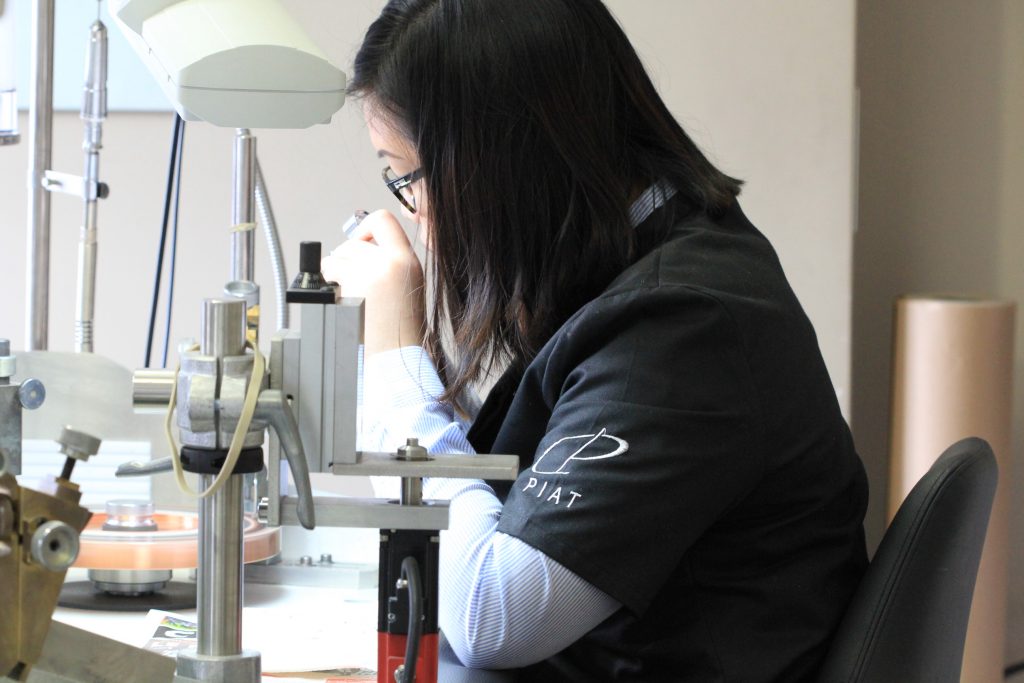According to you, what are the qualities required to be a good gem cutter?
All of them: A gem cutter has to pay attention and be calm, patient, focused, precise, meticulous, curious, and humble. It is also essential to have good 3D vision.
Is this craft becoming increasingly rare?
Yes, it is, especially since quality training programs are rare, which is a problem for our profession.
Could you share with us a lasting memory?
Phrom: None in particular. I just love sharing my knowledge and being surrounded by women every day!
Nuon: One day, my workshop manager and I had to cut a very prestigious stone in one day. It was a stone that was hard to cut and taking material off took a lot of time. I found myself standing on my feet for more than 45 minutes just to polish the table. I was beat and my body ached the next day but I was very proud to have taken on the challenge.
Léa : I remember exceptional and confidential pieces on which we worked, and for which our team spirit was decisive.
Liselotte: I once saw an exceptional pigeon blood ruby, extremely pure.
What is the difficulty of your job on a daily basis?
All of them: The difficulty is to stay focused and calm, it really is necessary to take breaks to remain attentive.
How long does it take to become a professional gem cutter?
A gem cutter will always learn from his craft. Even after several years this art continues to surprise us. But to answer your question, it will take 5 years minimum because it depends on the work done to qualify as a professional gem cutter.
What advice would you give young people who want to get started in this field?
Our first advice would be : go for it and do not hesitate! Then train with the best professionals you can find.
What are the objectives of a gem cutter?
All of them: our first goal is to enhance the stone (brilliance and value). We must respond as much as possible to customer demand and lose as little weight as possible.
Sometimes we warn our customers when their requests mean too much weight loss. We share the ethical values of the Maison Piat. We do not like to waste material and do our best to avoid it. It took nature millions of years to produce exceptional stones and we want to show our respect by preserving them as much as possible.
We also can’t always afford to “waste” time in cutting and always have to take into account our customers’ demands. And never forget the artistic and esthetically pleasing aspect of our craft.

